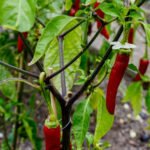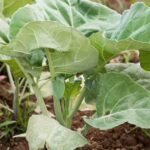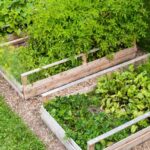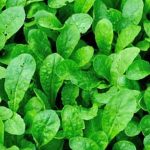Are you interested in starting your own vegetable garden but don’t know where to begin? This guide to vegetable gardening will provide you with all the information you need to get started. From selecting the right location for your garden to harvesting and preserving your vegetables, this guide covers every aspect of vegetable gardening. Whether you’re a beginner or have some experience, this guide will help you grow your own fresh and delicious produce right at home.
One of the key benefits of vegetable gardening is the satisfaction of harvesting your own organic produce. Not only does it provide a sense of accomplishment, but it also ensures that you are consuming healthy and pesticide-free food. Additionally, sustainable gardening practices can contribute to environmental conservation and reduce your carbon footprint.
Choosing the right location for your garden is crucial for the success of your vegetables. Factors such as sunlight exposure and soil quality play a significant role in determining the health and yield of your plants. This section will explore different options for garden placement and provide tips for assessing the best location for specific vegetables. So, let’s dig in and learn more about how to start your very own vegetable garden.
Selecting the Right Location for Your Garden
When it comes to vegetable gardening, one of the most crucial decisions you will make is selecting the right location for your garden. The success of your garden largely depends on this choice, as it can greatly affect the growth and productivity of your vegetables.
The first consideration when choosing a location for your vegetable garden is sunlight. Most vegetables require at least 6 hours of sunlight per day to thrive. Therefore, it’s important to select a spot that receives adequate sunlight throughout the day. Take note of any potential obstructions that may block sunlight, such as buildings or trees.
In addition to sunlight, soil quality is another essential factor to consider when determining where to place your garden. Conduct a soil test to assess its composition and fertility. This will help you understand what amendments, such as compost or fertilizer, may be necessary before planting.
Furthermore, consider the drainage capacity of the soil. Vegetables need well-draining soil in order to thrive. In cases where natural soil conditions may not be ideal, raised beds or container gardening are great options as they allow for greater control over the soil composition and structure.
Here are some specific tips for assessing the best location for your specific vegetables:
- Leafy greens such as lettuce and spinach prefer partially shaded areas.
- Root crops like carrots and radishes do well in loose, well-draining soil.
- Solanaceous plants such as tomatoes and peppers thrive in full sun and warm temperatures.
By taking these factors into consideration when selecting the right location for your garden, you’ll be laying a strong foundation for a successful vegetable growing season. Remember that different types of vegetables have different requirements so it’s important to tailor the location to each plant’s specific needs.
| Vegetable | Ideal Location |
|---|---|
| Lettuce | Partially shaded area |
| Tomatoes | Full sun and warm temperatures |
| Carrots | Loose, well-draining soil |
Choosing the Right Vegetables to Grow
When it comes to choosing the right vegetables to grow in your garden, there are a variety of options to consider. For beginners, popular choices such as tomatoes, peppers, and lettuce are excellent starting points. These vegetables are relatively easy to grow and can thrive in a variety of climates and soil types. Additionally, they provide a bountiful harvest that can be used in a wide range of dishes.
Climate and Soil Requirements
Before deciding which vegetables to plant, it’s important to consider the climate and soil requirements for each type of vegetable. Some vegetables, like tomatoes, thrive in warm climates with plenty of sunlight, while others, such as lettuce, prefer cooler temperatures and partial shade. Understanding these requirements will help you select the best vegetables for your specific growing conditions.
Determining What Will Grow Best
One key factor in choosing the right vegetables is determining what will grow best in your area. Consider researching your local climate zone and seeking advice from local gardening experts or nurseries. They can provide valuable insight into which vegetables are well-suited for your region and can offer guidance on how to care for them effectively.
By carefully selecting the right vegetables to grow based on climate and soil requirements, you can set yourself up for a successful vegetable garden. Whether you’re interested in cultivating classic favorites or trying something new, understanding the needs of each vegetable will help you create a thriving garden full of delicious produce.
In addition to considering these factors, be sure to also take into account your personal preferences and cooking habits when making your selections. Ultimately, planting a diverse array of vegetables that match your growing conditions and tastes will enrich your gardening experience.
Preparing the Soil for Planting
Testing and Amending the Soil
Before planting your vegetables, it’s important to test your soil to determine its pH level and nutrient content. You can purchase a DIY soil test kit or send a sample to a professional lab for analysis.
Based on the results, you may need to amend your soil with organic matter such as compost, manure, or peat moss to improve its fertility and structure. Adding these amendments will provide essential nutrients and improve drainage, ensuring that your plants have the best possible environment in which to grow.
Benefits of Adding Compost and Organic Matter
Incorporating compost into your soil offers numerous benefits for your vegetable garden. Not only does it add valuable nutrients, but it also improves soil structure, promotes healthy root growth, and encourages beneficial microbial activity. Organic matter helps retain moisture in the soil and prevents erosion, creating an ideal growing environment for your vegetables. By adding compost and other organic materials to your garden regularly, you’ll nurture the health of your soil in a sustainable way.
Tips for Proper Soil Drainage and Aeration
Good drainage is crucial for ensuring that excess water doesn’t accumulate around the roots of your plants, which can lead to rot or other issues. To improve drainage in heavy or compacted soils, consider incorporating coarse materials like sand or perlite.
Additionally, aerating the soil by loosening it with a garden fork or tiller can help improve oxygen flow to plant roots. It’s essential to ensure that your garden’s soil has proper drainage and aeration to support healthy plant growth throughout the growing season.
Planting and Caring for Your Vegetable Garden
When it comes to planting and caring for your vegetable garden, there are several key factors to keep in mind to ensure a successful harvest. Firstly, it’s important to pay attention to the specific needs of each vegetable in terms of planting depth and spacing. Different vegetables require different growing conditions, so be sure to do your research or consult a guide vegetable gardening for specific instructions.
Proper watering and fertilization are also crucial aspects of caring for your vegetable garden. Overwatering or underwatering can be detrimental to your plants, so it’s essential to find the right balance. Additionally, using the correct type and amount of fertilizer is important for the health and productivity of your vegetables.
In addition, weeding and pest management are important tasks when caring for your vegetable garden. Weeds can compete with your vegetables for nutrients, so regular weeding is necessary to keep them at bay. Similarly, pests can wreak havoc on your garden if not properly managed, so it’s important to monitor for any signs of infestation and take appropriate measures. By staying on top of these tasks, you’ll help ensure that your vegetable garden thrives throughout the growing season.
| Key Factors for Planting & Caring | Importance |
|---|---|
| Specific Needs of Each Vegetable | Ensure successful growth |
| Proper Watering and Fertilization | Vital for plant health |
| Weeding and Pest Management | Necessary for a thriving garden |
Harvesting and Preserving Your Vegetables
Once your vegetables are ready to be harvested, it’s important to know the best methods for picking and preserving them to ensure you can enjoy the fruits of your labor for as long as possible. Here are some tips for harvesting and preserving your vegetables:
- Determining Harvest Readiness: Each type of vegetable has its own indicators for when it is ready to harvest. For example, tomatoes should be picked when they are fully colored and slightly soft to the touch, while lettuce can be harvested as soon as the leaves are big enough to eat. Research each vegetable in your garden to find out how to tell when it is ready.
- Preservation Methods: There are several ways to preserve your vegetables for future use. Canning is a popular method that involves sealing vegetables in jars and processing them to kill bacteria. Freezing is another simple option that allows you to store vegetables for months after harvesting. Pickling is a great way to add flavor and extend the shelf life of certain vegetables.
- Storing Your Harvest: Once you have harvested and preserved your vegetables, it’s important to store them properly. Some vegetables, like potatoes and onions, can be stored in a cool, dark place for several months. Others may need to be refrigerated or frozen. Be sure to research the best storage methods for each type of vegetable.
Taking the time to learn about harvesting and preserving techniques will ensure that all of your hard work in the garden pays off with a bounty of delicious, homegrown produce.
Remember: “Guide Vegetable Gardening” is a helpful resource for beginners who are looking to start their own vegetable garden.
Troubleshooting Common Garden Problems
Dealing with common garden problems is an inevitable part of vegetable gardening. Pests, diseases, and nutrient deficiencies can lead to disappointing results if not addressed properly. Identifying these issues early on and taking the right steps to solve them can help ensure a successful yield from your garden.
When it comes to pests, it’s important to be proactive in preventing infestations. Regularly inspecting your plants for any signs of insect damage or presence of pests is crucial. Common pests in vegetable gardens include aphids, caterpillars, and beetles. Depending on the type of pest, there are various methods for controlling them such as handpicking, using natural predators, or applying organic pest control products.
Diseases can also take a toll on your vegetable garden if left unchecked. Issues like powdery mildew, blight, and root rot can impact the health of your plants. Proper sanitation practices and good air circulation can help prevent the spread of diseases in your garden. In cases where diseases have already affected your plants, it’s important to properly remove and dispose of infected plant parts to prevent further spread.
Finally, nutrient deficiencies can hinder the growth and development of your vegetables. Conducting soil tests will help you identify any deficiencies in essential nutrients such as nitrogen, phosphorus, and potassium. Based on the results, you can adjust your fertilization practices or choose specific amendments to replenish the lacking nutrients in the soil.
For more guidance on dealing with common garden problems in vegetable gardening, there are several resources available that offer detailed information on identifying and addressing these issues effectively.
Sustainable and Organic Practices in Vegetable Gardening
In conclusion, vegetable gardening offers a multitude of benefits, including the satisfaction of harvesting your own produce and the opportunity to practice sustainable and organic gardening methods. By selecting the right location for your garden and choosing the appropriate vegetables for your area, you can set yourself up for a successful and bountiful harvest. Additionally, proper soil preparation, planting, and maintenance are essential for the health of your vegetable garden.
As you embark on your vegetable gardening journey, it is important to remember the principles of sustainable and organic practices. By prioritizing natural methods of pest management and fertilization, as well as implementing water conservation techniques and composting, you can not only ensure a healthy garden but also contribute to environmental preservation.
In summary, this guide to vegetable gardening provides a comprehensive overview of all aspects of creating and maintaining a successful garden. Whether you are a beginner or an experienced gardener, following these tips for sustainable and organic practices will not only benefit your vegetables but also contribute to a healthier planet overall. Happy gardening.
Frequently Asked Questions
What Is a Good Layout for a Vegetable Garden?
A good layout for a vegetable garden includes organizing plants by their mature size, planting in a way that maximizes sun exposure, and providing easy access for watering, weeding, and harvesting.
How Do I Map My Vegetable Garden?
Mapping out your vegetable garden involves measuring the space, noting the direction of sunlight, planning the arrangement of plants based on their growth habits, and labeling each plant on your map for easy reference.
What Is the Best Vegetable Garden for Beginners?
The best vegetable garden for beginners typically includes easy-to-grow crops like tomatoes, lettuce, green beans, and radishes. It’s also important to start small and gradually expand as you gain more experience.

If you’re looking to get into vegetable gardening, or are just looking for some tips on how to make your current garden better, then you’ve come to the right place! My name is Ethel and I have been gardening for years. In this blog, I’m going to share with you some of my best tips on how to create a successful vegetable garden.





